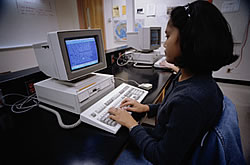Breaching language barriers in education
The advantages of long distance learning are enormous, providing a greater educational base to a wide ranging and more diverse student body. Aside from making education possible for broader population groups, it offers a never-before attainable level of quality education. At least, that's the theory. In practice however, the situation is far from ideal. While modern communication has facilitated the educational process, the reality of the situation has often resulted in the flooding of teachers with student requests and administrative requirements. In fact, distance learning has resulted in a greater volume of communication, much of it hampered by language barriers. Such barriers that modern technology was supposed to have harbingered and minimized, affect the quality of the one-on-one approach. The Ped-Care project provides an answer to this situation through its development of "intelligent-tools" towards the melioration of current pedagogical techniques. The project incorporates the differences of time zones and adapts to technological differences in order to improve the student-teacher communication processes. It uses a number of tools, one such being the Semantic Analysis Techniques. The semantic analysis techniques are a set of streaming algorithms and neural networks that provide natural language support. These algorithms appropriate the improvement of end-user interfaces for helpdesk applications, user manuals and database queries. Such interfaces could also be e-mail or SMS messenger services. In so doing, the semantic analysis techniques serves as a filter for SMS and email applications that is able to respond to student queries on an automatic level, responding with the correct information, forwarding to other departments if necessary. Thereby it reduces the workload on teachers, allowing them to focus on more important and personal student requirements.







